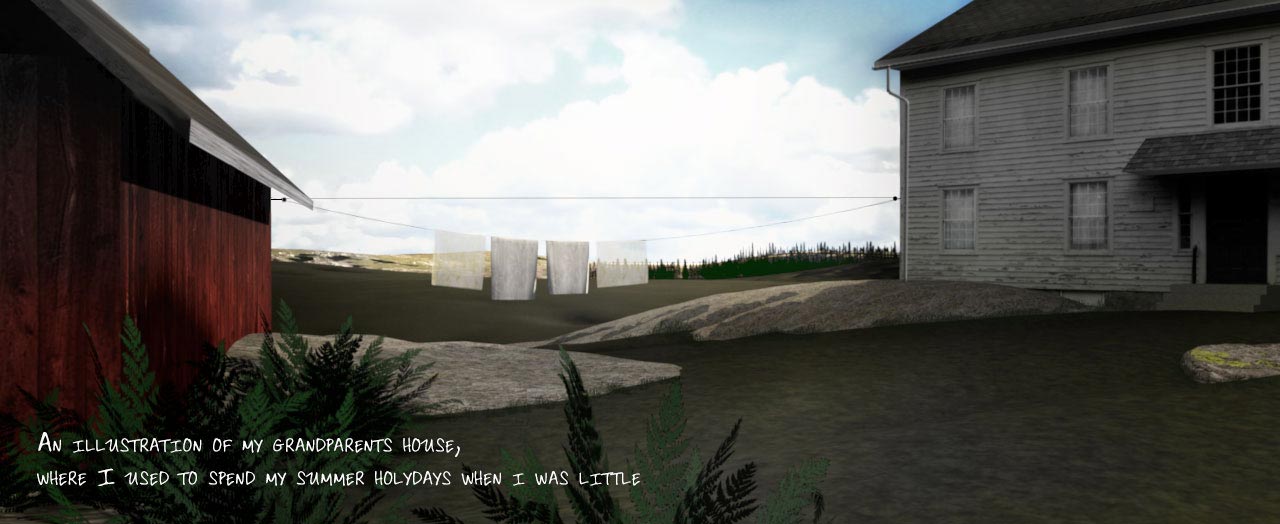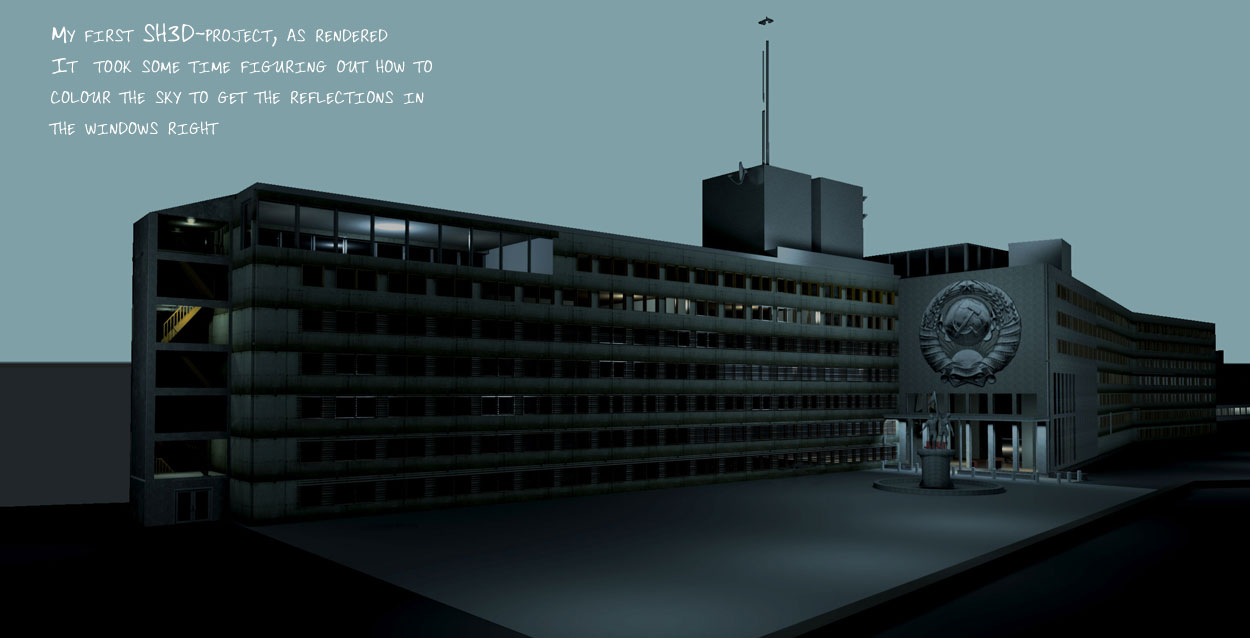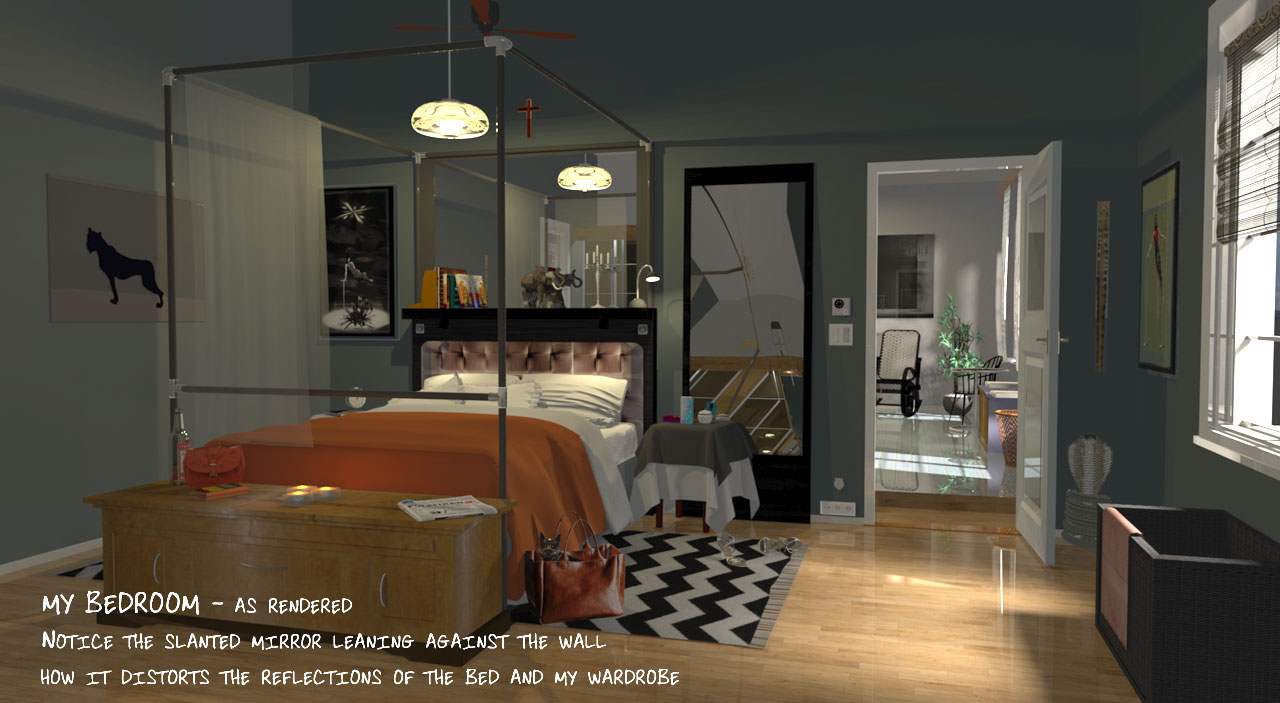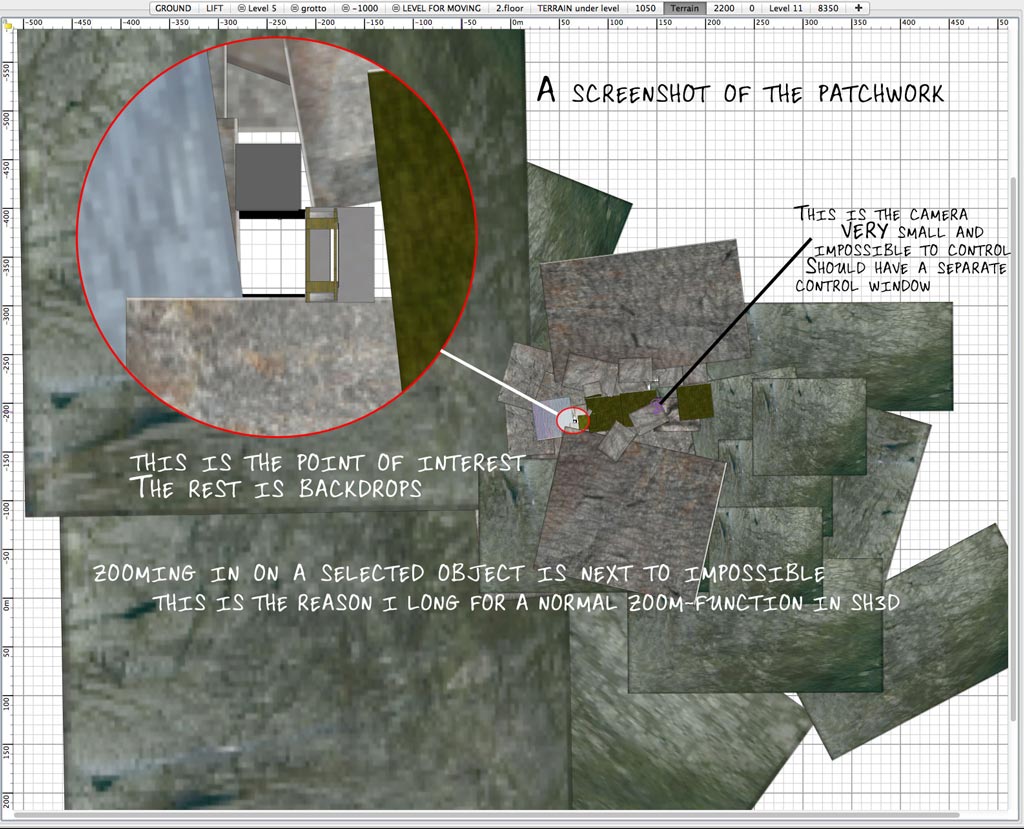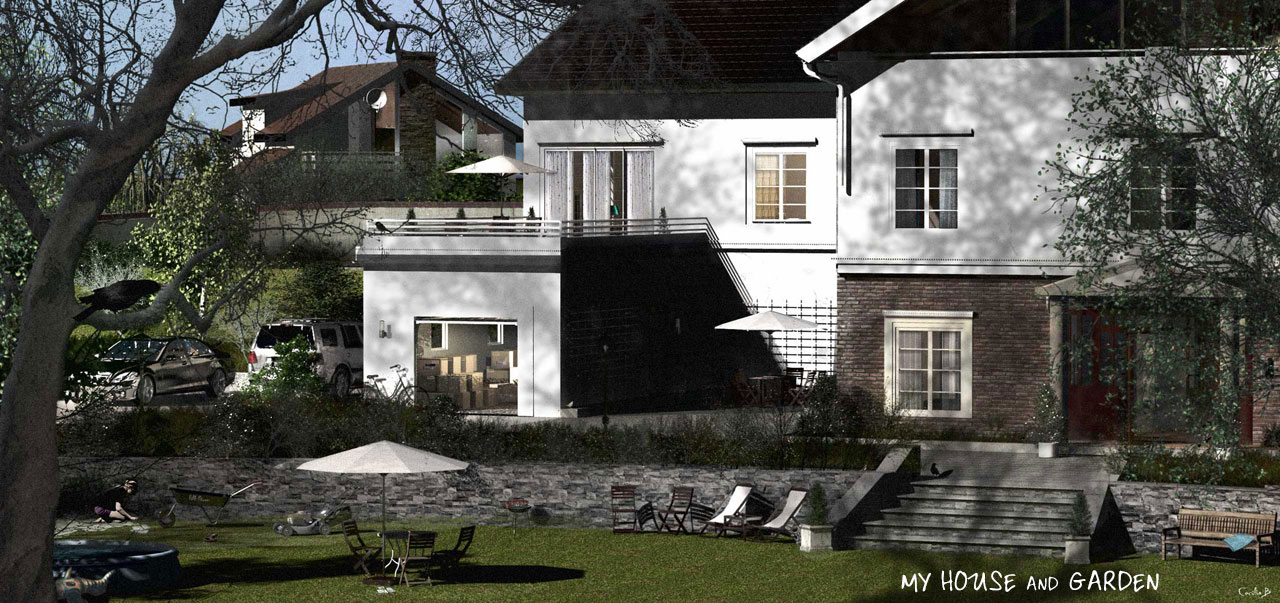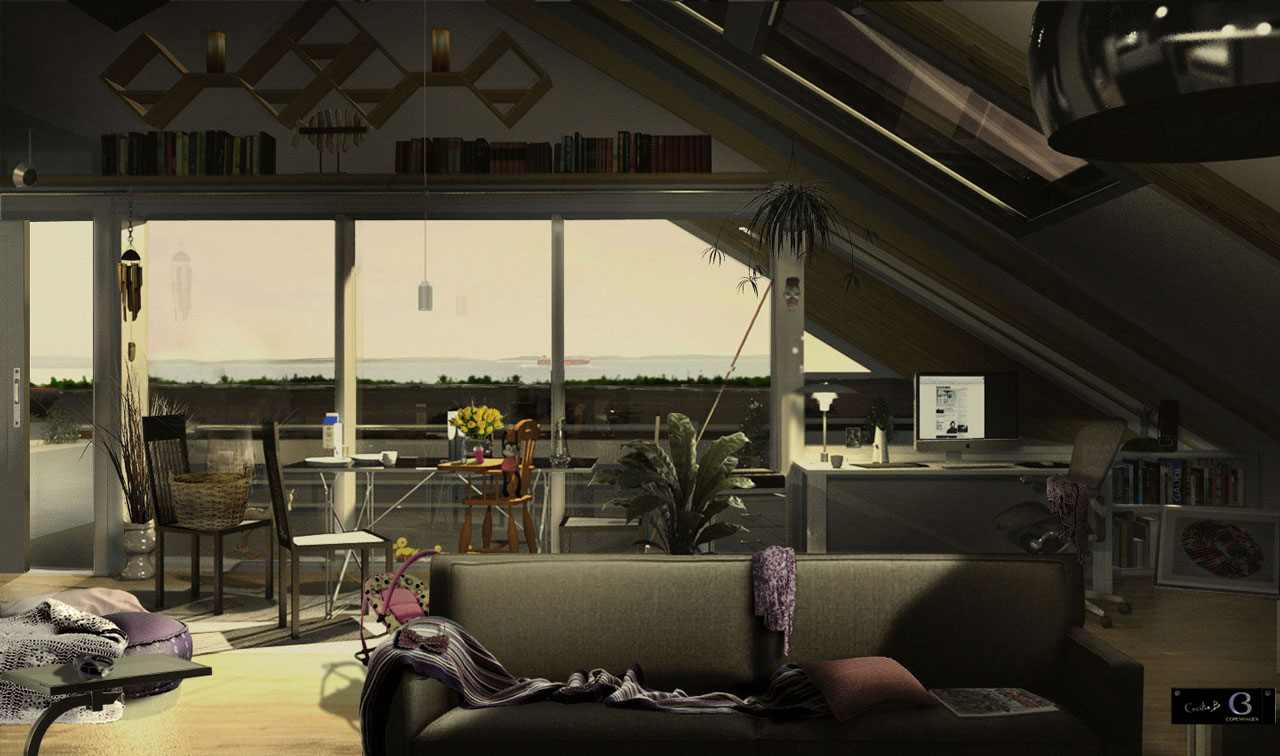And you, how do you use your Sweet Home 3D? Episode 14
Last week, Cecilia B.R. posted in the forum a beautiful video named The Bungalow by the Chinese ghost city. Very intrigued by the result, we asked her how she succeded to obtain this rendering.
- At the early beginning, why did you start to use Sweet Home 3D?
I grew up in a home with a library, and among the thousands of old books, there was a complete set of the Illustrated Classics series. Hundreds of magazines I could hide under my sweater and read in my bed at night: Sherlock Holmes, Frankenstein, Dr. Jekyll and Mr. Hyde... with gruesome details and unspeakable monstrosities. I loved it. I loved the illustrations, and decided that if I should ever write a book, it should be thoroughly illustrated.
I was 9 when I inherited my older brothers Amiga 1000. My diary became digital, and so did my illustrations.
In 2012, I published a 14-chapter serial on my blog something I called a blog-adventure — not at all serious — but it needed illustrations. That was the first time I used Sweet Home 3D seriously, and I spent hour after hour searching Sweet Home 3D forum and reading about other people problems and how they were solved, trying to learn as much as I could about the program.
This is one of my first illustrations made with Sweet Home 3D:
I knew very little about Sweet Home 3D at that time, so the final result includes a lot of Photoshop-ing:
Then I got the opportunity to buy an old shack just outside Copenhagen. With my better half still studying in Miami, I needed a program that could visualize my ideas for remodeling and furnishing. So I modeled the complete house and furnished it, and sent the pictures to Miami for approval and input.
This is my proposal for decorating the bedroom:
- Before the video, you posted some impressive images showing an Ugly cabin as you called it, with a very well rendered atmosphere and a texture covering an uneven ground. Can you explain how you designed the ground texture?
My landscapes are constructed from multiple terrains with variable surfaces and heights.
I create most of my big terrains using Vue partly because it's a program that is easy and intuitive to use, but mainly because of it's enormous library of textures, and the way you can design your own textured fields in millions of combinations, so you can avoid having a landscape that looks like it's been tiled. But the bigger terrains are really best for faraway hills and distant mountains, and Vue's textures can be also exported and used on smaller terrains.
For smaller terrains, like terrains close to buildings or when I need more accurate details, I use Verto Studio 3D. With this application, it's easy to create like caves or tunnels, and overhangs, but its also very easy to create uneven surfaces, like a forest ground, a lawn or a gentle slope with random irregularities, like around my house:
- Which images were designed with Sweet Home 3D in The Bungalow by the Chinese ghost city video?
As far as I can see in the final version, there are now only four places in the video that does not involve the use of Sweet Home 3D:
- The intro, obviously. The animation of the girl is made and rendered in Poser Pro.
- The short scene introducing the bad weather (01:07 – 01:14) made with After Effects.
- The poster introducing part two, (04:54 – 05:04) is made with Photoshop, and has no Sweet Home 3D elements in it.
- The dancers at the end of the film, which is made with Poser Pro and filmed off a 5K screen with an iPad.
The stills, in the first part of the film, are all original renders from Sweet Home 3D. Color-correction is, however, performed on one scene, after discovering that I had forgot to remove a blue filter from the surface of the water. This is the original:
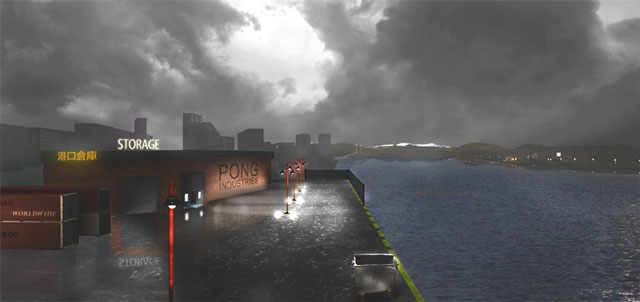
The scene is made from 5 different renderings, and instead of rendering 4 new images, I replaced the blue with grey.
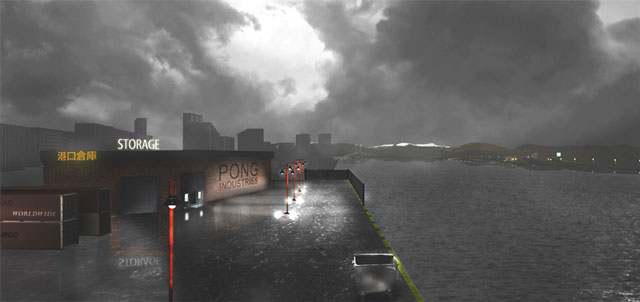
Here's an example on how I'm texturing the sky. First I find a nice picture, or I make one:
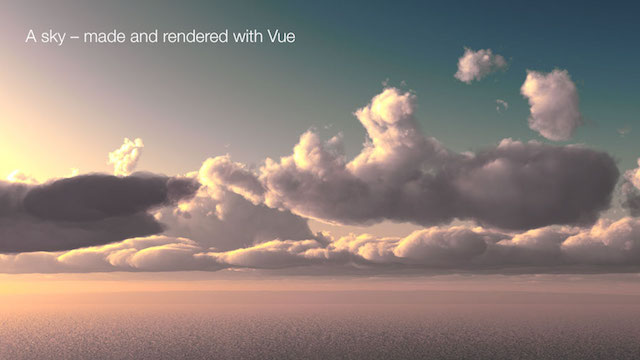
Then I match it to the visible area of the sky, using a matrix that gives me the right coordinates of the equirectangular projection.
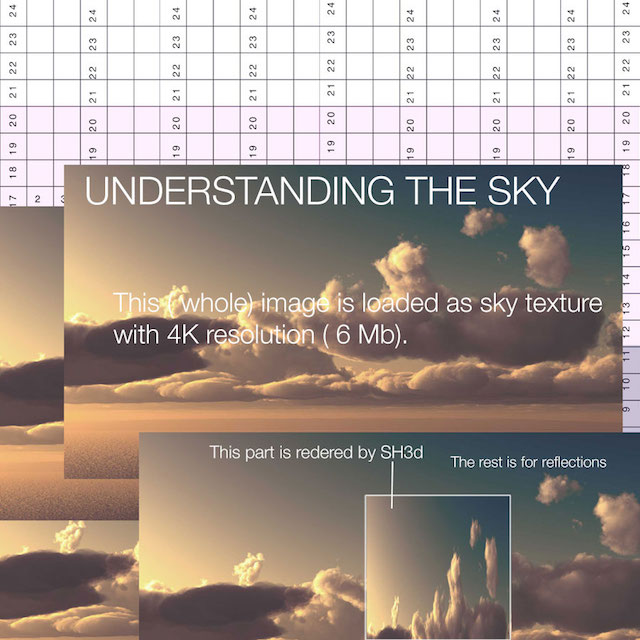

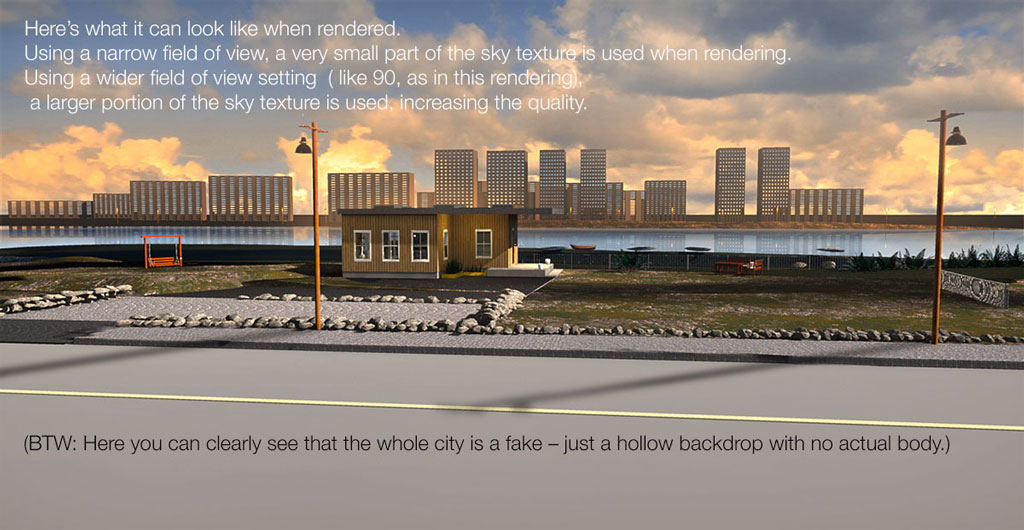
- Can you render the following picture with Sweet Home 3D?
Sure. This is a rendering. I'm not saying that everything in this picture is made with Sweet Home 3D, but neither are the 3D models that comes with the program. The tree, for instance, is a PNG. of a Photoshop-brush, and the neon signs are 3D models made with Photoshop, using 3D extrusion and exporting them as OBJ files. Afterwards I edited the MTL file to add the glow effect. Shining different colored light on them, they stand out as glowing with different colors in the dark. The moon is a glowing sphere with a semi-transparent fog placed in front of it to diffuse the light.
The "ghost city" itself, is just a backdrop, made from boxes in horizontal and vertical rows. Use copy/paste, and it will take maybe five minutes (things don't have to be big to look big, it's just a matter of perception whether things appear to be big or small).
It took some time rendering it: 8 hours on a 12 core Mac Pro.
But this one took longer:
I use about two hundred different lights to light up the bridge alone, and a couple of hundred lights to light up the city and the flowers. It rendered for two days, and then I noticed I had forgotten to include most of the neon signs. The bokeh comes from a semi-transparent PNG placed close to the camera. That was a mistake that I regretted when I saw the result — a mistake that shall not be repeated :)
- What is NOT made with Sweet Home 3D in the video?
In the first part, the terrains and the skies are made with Vue, and imported into Sweet Home 3D. I have added some birds and some specs of dust, some rain and a lightning effect, trying to bring some life to the stills, and I have created camera movements, zooms and panning, with After Effects, for the same reason. I only zoom between 78% and 100%, and all the images are rendered in 2K.
In part two of the video, I have used After Effects a lot. Creating videos with smooth motion is not possible with Sweet Home 3D. The videos start abruptly, and end abruptly. There is no easing in and out, and any change of camera direction is distinctly noticeable. So that part had to be fixed with After Effects. Using pixel motion in After Effects, you can slow down a video, or parts of it, to a complete standstill, without losing quality or get jittery movements.
The girl walking up to the house, and the woman walking in the underworld are also not created with Sweet Home 3D. I decided to leave them in, after all, because it shows that you can use Sweet Home 3D to create the basics, and then add the action with another program...
- Could you give some nice or fun tips about the way you use Sweet Home 3D?
Some fun tips... well, if you look at my video from 07:58 to 08:05, you can observe something odd happening to the perspective, an effect that is produced by moving the camera closer while at the same time widening the field of view. This can be done with the virtual visitor. I will focus a lot of camerawork in my next film.
Another "fun effect" is to use one-sided-surfaces instead of walls. That means you can move the camera outside the wall and get a wider shot of the room, but the wall will be visible if you move the camera and shoot from the other side. I use a lot of levels, in the same way I use layers in Photoshop.
If you have "the real walls" on one layer (level), and the fake "one-sided-walls" on another layer, you can turn the visibility on and off, and work a lot faster than by adjusting the transparency for the whole preview. The most obvious place to see this effect in my video, is at 06:57 to 07:07, where I'm moving the camera through both a one-sided-rectangle and a transparent PNG file that holds the writing.
The video-tool is really like a motion controlled camera-rig, that you can do any number of cool things with.
What I like the most with Sweet Home 3D, is that it is so incredibly easy to use. Of course, the program is primarily intended to be a help for people who want to redecorate their homes or to visualize their dream house, but I've always had an urge to challenge the limits. And Sweet Home 3D is a program that willingly allows you to challenge it. It's quite simple to use, and there are no hidden menus or settings, no hidden boxes to be ticked or parameters to be tweaked. My experiments either work, or they don't — and I find out immediately.
And it's fast to work with — much faster than any other 3D — program I have tried. For me, there are only some minor inconveniences that make my work slower than it needs to be:
- The zoom function is next to useless when using a touchpad or a magic mouse, since the program cannot zoom in on neither a selected object, or on the camera.
- You have to zoom in on the camera to control it. It should really have separate controls, totally independent on how far in or out your work area is zoomed.
- Objects cannot be moved along the z-axis with the keyboard.
- How drawing in 3D with Sweet Home 3D helps you to imagine a story?
Using a 3D program to model the locations, you put yourself on-site in your own fiction, it also inspires you to come up with new ideas. How many steps are leading up from the cellar to the ground floor? Is it really possible to hide in the closet beside the secret elevator, and where is the best location for observing the nightly container shipments? Where is the best place for a secret visitor to park her car if she wants to go unnoticed?
Normally I have a clear vision of what my locations look like, down to the smallest details, but things happen when you make a 3D model. A place should look like it's being used, and should reflect the personality of the users or the person(s) living there. And when I start working on the details, like I have described them earlier, I can find out that things work differently in a virtual 3D reality than in my head – like with the secret elevator in the bungalow:
Originally there was a hidden staircase, but a staircase needs a lot of room, and there was only room for a ladder, so I changed the story and made a lift instead, which of course had some unforeseen consequences: An important part of the plot takes place during a storm, when there's a power outage. So I had to install a generator in the cellar, but how do you get down there when the lift is not working... and so on... and then I got the idea of establishing another entrance, like the fox always has two ways out, which suddenly opened up some interesting alternatives.
And in the next location (which I am working on): A cave exploration in the Norwegian mountains accidentally leads to finding a hidden entrance to an enormous abandoned military bunker from the Cold War, one hundred meters under the ground. It looked good on paper, but when I had constructed it, I started to realize where the water would end up every spring when the thaw started. So the story had to be changed, and the many hours of creating tunnels and constructing the underground labyrinth, was in fact saving me from making a mistake.
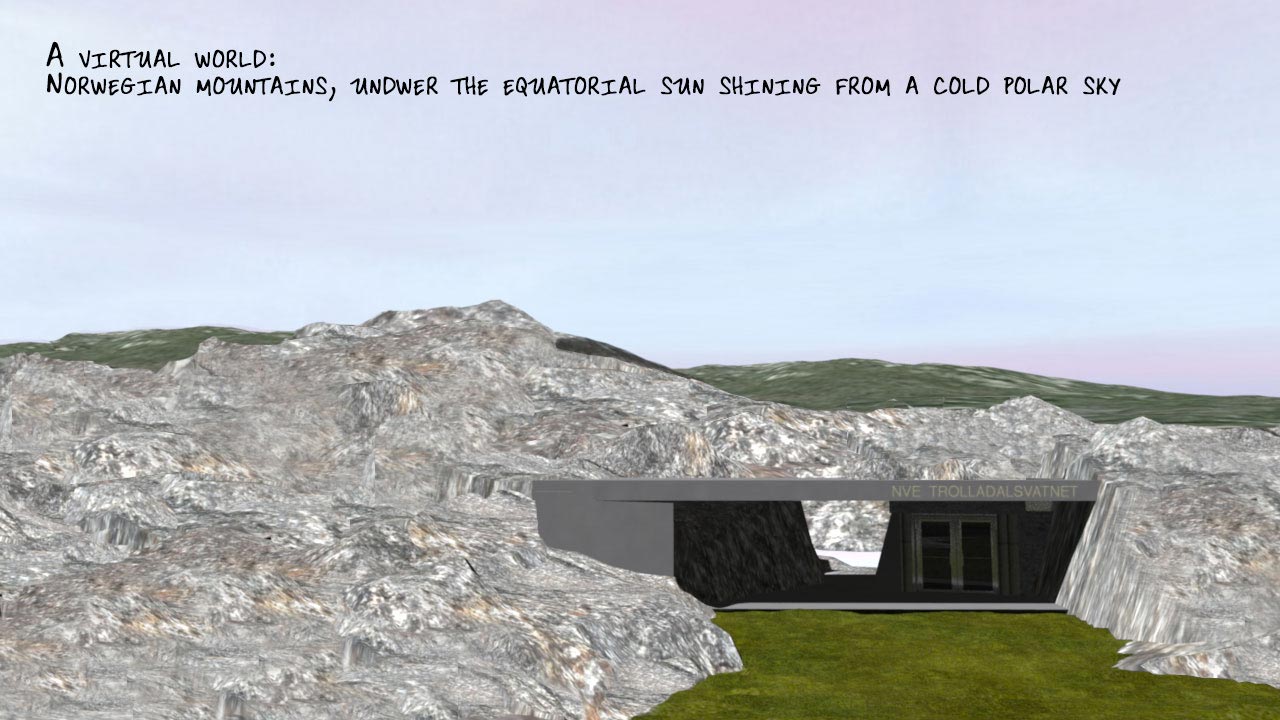 |
|
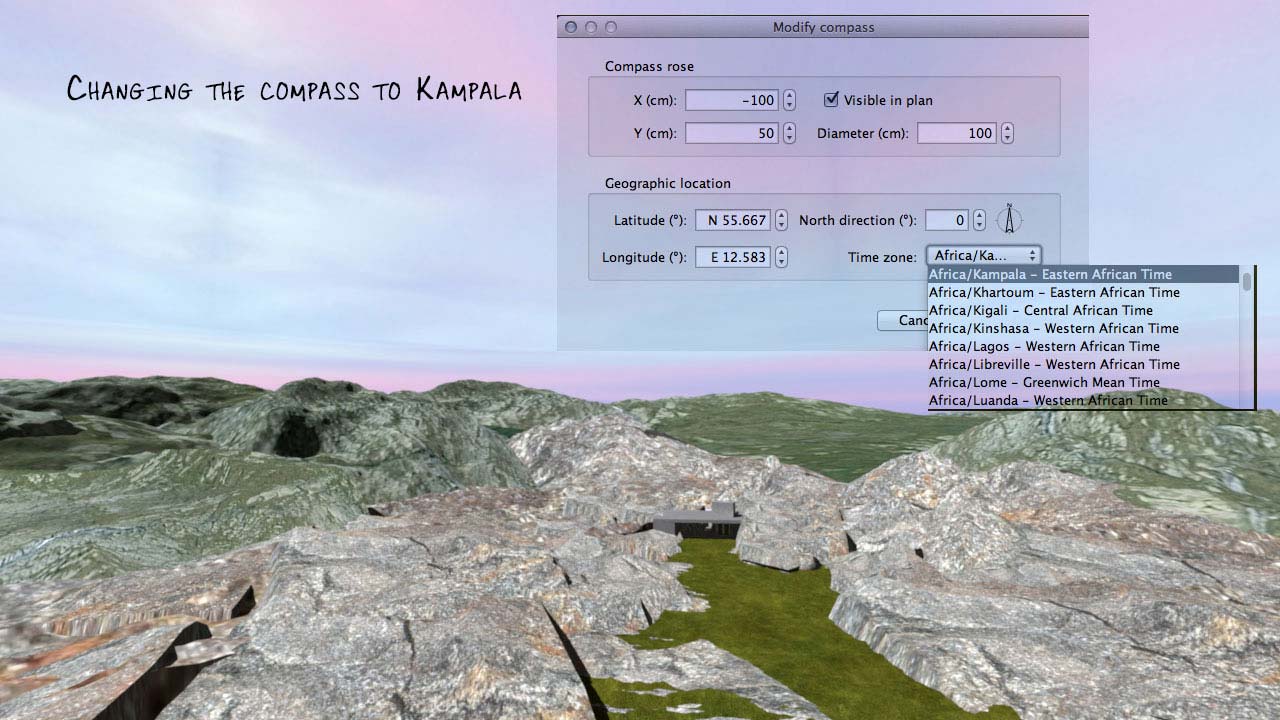 |
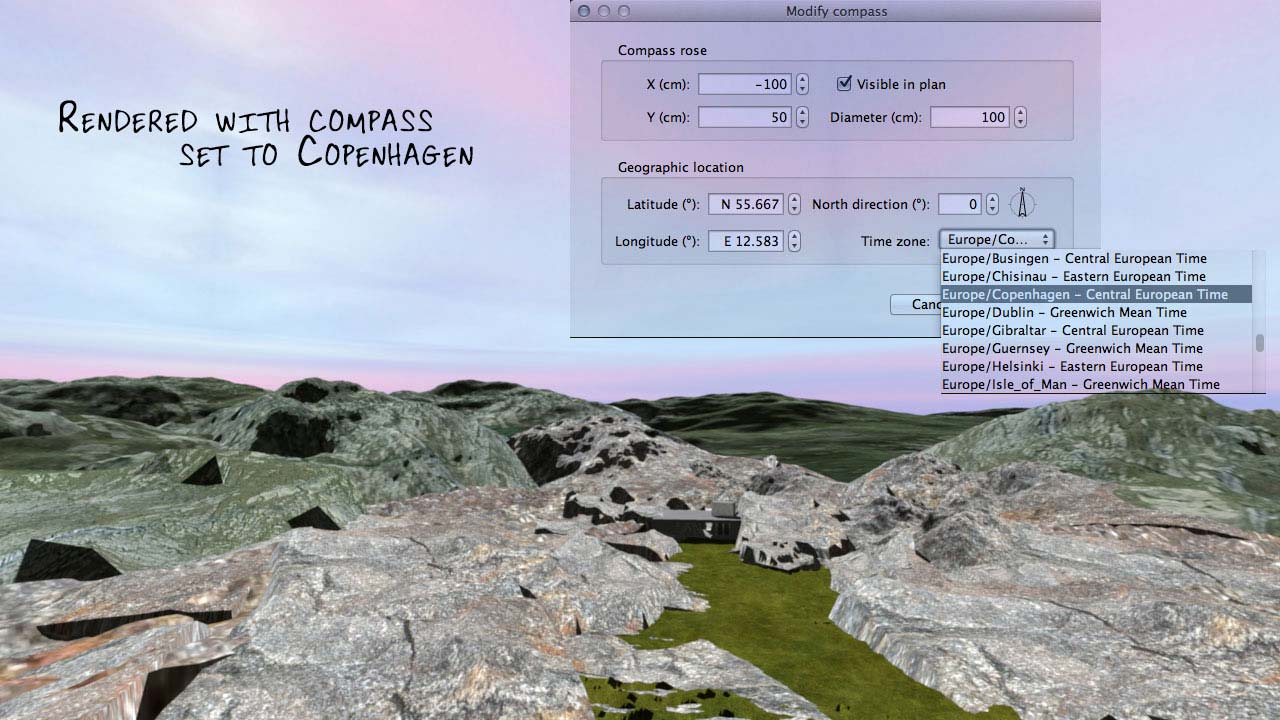 |
| (click on images to enlarge) | |
- Do you plan a new film that would take place in the "Ugly Cabin"?
This is my first attempt to make a film. Originally I wanted to make this video to show at a writers’ course I'm attending, showing people how I use Sweet Home 3D when I'm writing. But as the project went along, I started to wonder if it maybe could be more than just that.
I have two more films to make:
- One is about the Ugly Cabin, and what happens in 2016, when a young female writer inherits it after her uncle dies in a clinic in Switzerland, where he has lived for forty years. When she starts redecorating it, she finds a chest under the floor. Among other things, it contains a diary and an envelope full of negatives. In the diary she can read about what happened in 1973, and why her uncle moved to Switzerland.
- The other is about the third location — in Spitsbergen, a place where anyone can come and live. It's governed by Norway, but you don't need a visa to go there, and you can build a house and start your business without needing anyone's permission – in other words: a perfect place to carry out some rather special activities that one needs to keep away from public scrutiny.
The first film is out there now, living it's own life on Vimeo and Youtube, and maybe someone likes it, maybe not.
The next two films will be different — more animated, and more consistent.
Thank you very much, Cecilia, for offering all these secrets. And congratulations, your work is amazing!


